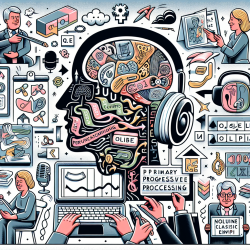Introduction
In the realm of stroke rehabilitation, enhancing patient outcomes is paramount. Recent research, such as the study titled Does the addition of virtual reality training to a standard program of inpatient rehabilitation improve sitting balance ability and function after stroke? Protocol for a single-blind randomized controlled trial, explores innovative methods to improve rehabilitation outcomes. This study investigates the potential of virtual reality training (VRT) to enhance sitting balance and function in stroke patients.
The Study's Core Findings
The research conducted by Sheehy et al. (2016) is a single-blind randomized controlled trial involving 76 stroke rehabilitation inpatients. These patients, unable to stand independently but capable of sitting for at least 20 minutes, were divided into experimental and control groups. The experimental group engaged in VRT exercises designed to challenge sitting balance, while the control group played games that minimized trunk movement.
Key outcome measures included the Function in Sitting Test (FIST), Ottawa Sitting Scale, and other quantitative measures of postural sway and function. The study aimed to determine whether VRT could improve sitting balance ability and function, and whether it could motivate patients to engage more intensely in rehabilitation exercises.
Implications for Practitioners
The findings from this study offer significant insights for rehabilitation practitioners:
- Incorporating VRT: Virtual reality can be a powerful tool to increase patient engagement and motivation, leading to more repetitions of therapeutic exercises, which is crucial for neural recovery post-stroke.
- Enhancing Sitting Balance: VRT can specifically target sitting balance, a critical component for improving overall mobility and function in stroke patients.
- Cost-Effective and Accessible: The Jintronix VRT system used in the study is relatively inexpensive and easy to implement, making it a feasible option for many rehabilitation settings.
Encouraging Further Research
While the study provides promising results, it also highlights the need for further research. Practitioners are encouraged to explore the following areas:
- Long-Term Effects: Investigate the long-term benefits of VRT on sitting balance and overall function post-stroke.
- Broader Applications: Assess the applicability of VRT in outpatient settings and its potential benefits for other patient populations.
- Integration into Standard Care: Explore how VRT can be seamlessly integrated into existing rehabilitation programs to maximize patient outcomes.
Conclusion
The integration of virtual reality into stroke rehabilitation represents a significant advancement in therapeutic practices. By leveraging technology to enhance patient motivation and engagement, practitioners can potentially improve rehabilitation outcomes. The study by Sheehy et al. serves as a catalyst for further exploration and implementation of VRT in clinical settings.
To read the original research paper, please follow this link: Does the addition of virtual reality training to a standard program of inpatient rehabilitation improve sitting balance ability and function after stroke? Protocol for a single-blind randomized controlled trial.










